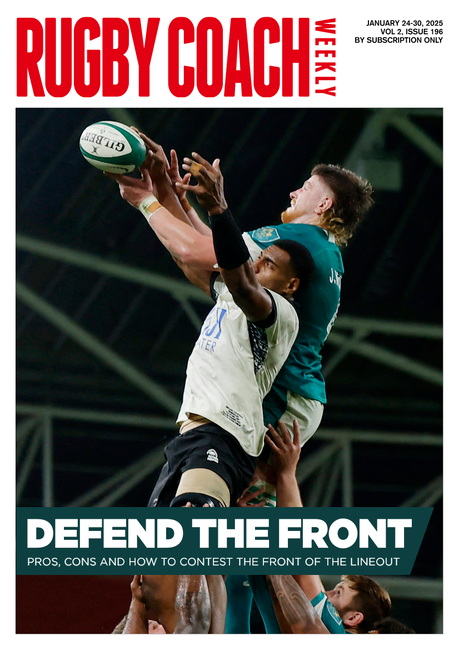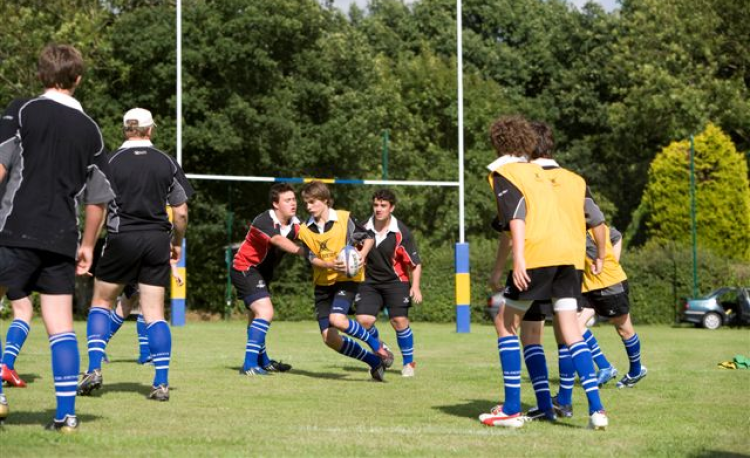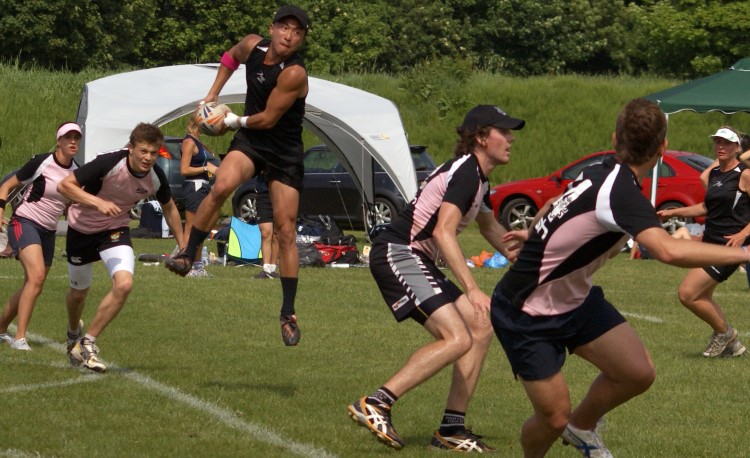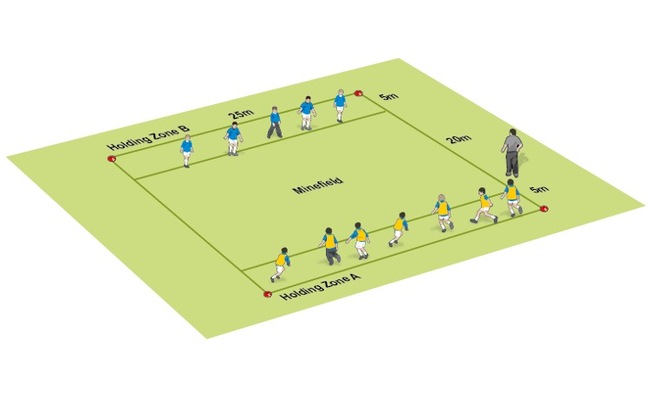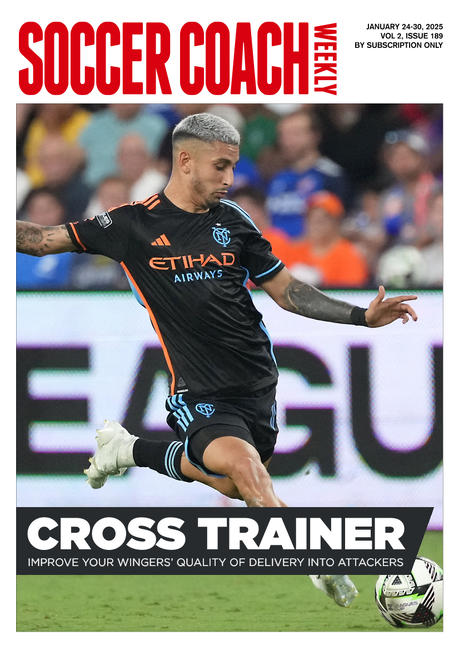Touch rugby top tips
In touch rugby players tend to run sideways more. Since they cannot "bust" through the line, they look for gaps by shifting across the defence. Defenders are not therefore committed. This reduces the chances of creating gaps.
Skills/tactics: Commit defenders by running straight.
With more time on the ball, touch rugby promotes the use of the "huge" miss pass, perhaps cutting out two or three attacking players. From a defensive point of view, this is not generally difficult to defend, since defenders can easily slide across. In the "full-on" game it is rare that these passes have much effect either, unless there are dummy runners and strike runners coming onto the ball.
Skills/tactics: Commit defenders by fixing and passing.
Switching / the cut pass
With all the runners tending to stand flat and the ball carrier running sideways, switch passes and dummy switch runs become a feature of touch rugby. This rarely creates space, however, since the switch takes the ball back towards trouble, and there are fewer players left to pass to if the dummy switch is used.
A number of experts see these switches as "lazy" support, offering little in the way of positive outcome, commensurate with the effort of making the run in the first place.
Skills/tactics: Create overloads (more attackers than defenders) by looping after the pass, rather than having runners looking for the switch pass.
When to switch in touch rugby: A switch pass into touch rugby is probably best left to the wing man and their inside man. It brings the ball back into play and helps prevent the "criminal" waste of ball that is running into touch.

Width and spacing
In attack, touch players revert to almost military specific spacing. Each player is equi-distant from the last. This allows the defence easily to space itself to counter. They also do not have to spread out to the sides of the pitch.
Skills/tactics: Use the whole width of the pitch. This means wing men on both ends of the line standing close to the touchline. The other players should be constantly adjusting their spacing. Running lines will then be more varied.
A final thought
Touch rugby is seen as a fun way of getting a game of rugby going as quickly as possible. Imposing lots of constraints can be seen as spoiling a "good thing". The question is this – if we have a chance to get the ball in hand and move it around, why not do it correctly?
Some "unfun" fundamentals early in the season will lead to a more "fun" game of touch in the future. Patience, persistence and practice, lead to executed excellence and enjoyment!
Newsletter Sign Up
Coaches Testimonials

Gerald Kearney, Downtown Las Vegas Soccer Club

Paul Butler, Florida, USA

Rick Shields, Springboro, USA

Tony Green, Pierrefonds Titans, Quebec, Canada
Subscribe Today
Be a more effective, more successful rugby coach
In a recent survey 89% of subscribers said Rugby Coach Weekly makes them more confident, 91% said Rugby Coach Weekly makes them a more effective coach and 93% said Rugby Coach Weekly makes them more inspired.
Get Weekly Inspiration
All the latest techniques and approaches
Rugby Coach Weekly offers proven and easy to use rugby drills, coaching sessions, practice plans, small-sided games, warm-ups, training tips and advice.
We've been at the cutting edge of rugby coaching since we launched in 2005, creating resources for the grassroots youth coach, following best practice from around the world and insights from the professional game.


